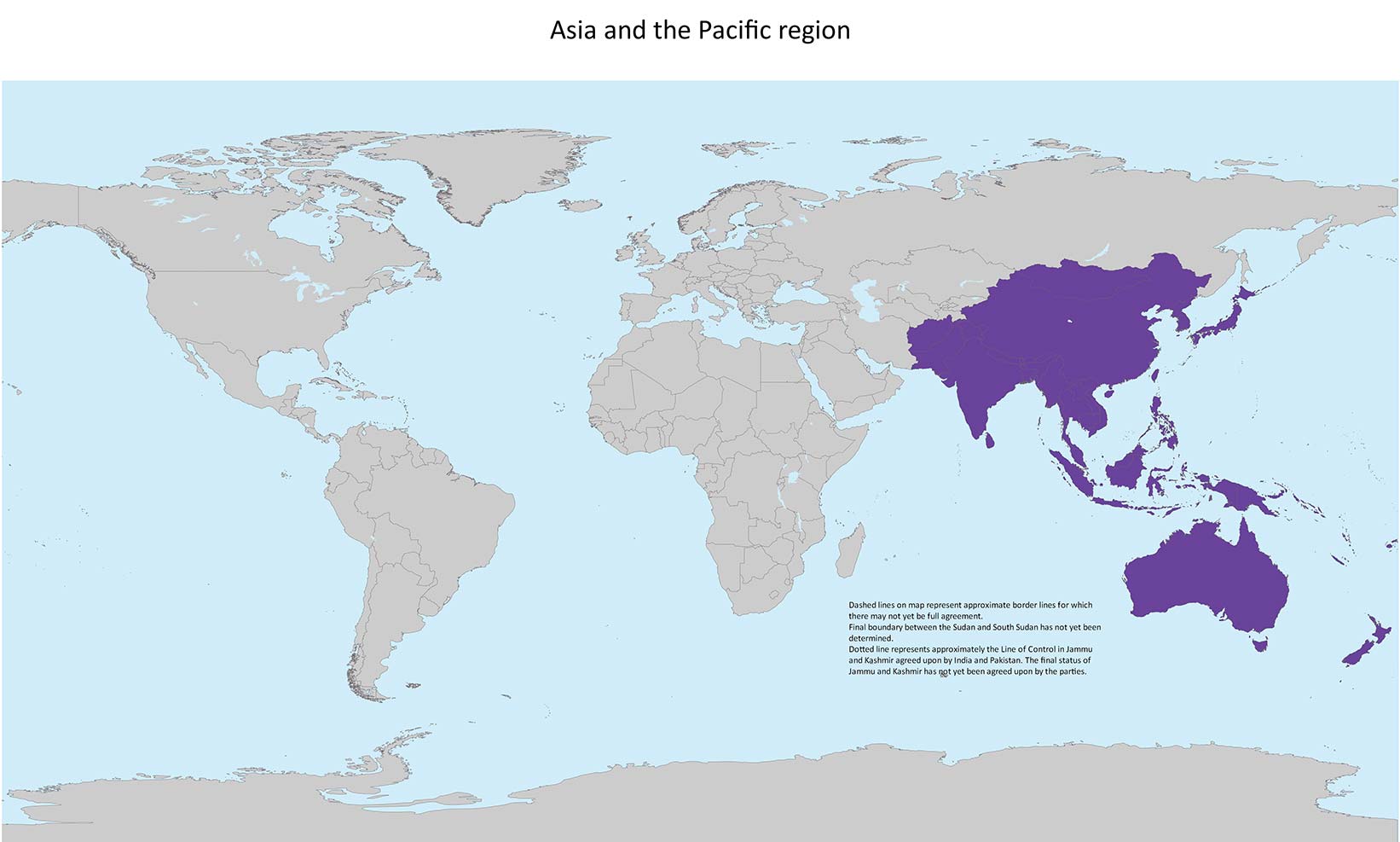Chapter 6. Status of soil pollution in Asia and the Pacific
Introduction
Lead authors: Ravi Naidu and Bhabananda Biswas (Australia)
Other contributing authors and country contents: Zueng-Sang Chen (Taiwan Province of China), Joytishna Jit (Pacific Island countries), Mohammad Mahmudur Rahman (Bangladesh), Luchun Duan (Mainland China), Jeonggwan Kim and Kihwan Lee (The Republic of Korea), Tanapon Phenrat (Thailand and Myanmar), Nabeel Khan Niazi (Pakistan), M.A. Ayanka Wijayawardena (Sri Lanka).
Acknowledgements: Some contents have been provided and revised by Muhammad Shahid and Natasha (Pakistan), Duangporn Kantachote, Peerapat Kosolsaksakul and Oramas Suttinun (Thailand).
This chapter discusses trends of soil pollution in Asia and the Pacific, hereinafter referred to as the Asia-Pacific region (area highlighted on the map Figure 1). The region covers 42 countries and territories that can be divided into four sub-regions:
- - East Asia: China, the Democratic People’s Republic of Korea, Japan, Mongolia, the Republic of Korea and Taiwan Province of China.
- - South Asia: Afghanistan, Bangladesh, Bhutan, India, Maldives, Nepal, Pakistan and Sri Lanka.
- - South East Asia: Brunei Darussalam, Cambodia, Indonesia, the Lao People’s Democratic Republic, Malaysia, Myanmar, the Philippines, Singapore, Thailand, Timor-Leste, and Viet Nam.
- - Pacific: Australia, the Cook Islands, Fiji, Kiribati, Marshall Islands, the Federated States of Micronesia, Nauru, New Zealand, Niue, Palau, Papua New Guinea, Samoa, Solomon Islands, Tokelau, Tonga, Tuvalu, and Vanuatu.
Figure 1. The Asia–Pacific region. The region includes many countries, but only a few are labelled to appear on the map.

The region is quite diverse in terms of economic status, growth, business activities, consumer lifestyle, environmental policy and appreciation of sustainable development (IMF, 2018). The majority of countries in the Asia–Pacific region are in the “low” to “upper middle” income categories and have rapidly growing economies (World Bank, 2021). For example, Bangladesh, China, India, Indonesia and Malaysia are among those experiencing rapid growth. On the other hand, Australia, New Zealand, Japan, Singapore, and Taiwan Province of China are examples of advanced economies, while Nepal, Democratic People’s Republic of Korea and the Pacific Island countries (PICs) including the collective clusters of Polynesia, Melanesia and Micronesia1 have small and low-growth economies (IMF, 2018). Overall, from an economic and growth perspective, the region is the fastest growing of all regions of the world. However, this growth is not without its costs, especially in terms of environmental impact (UNEP, 2017a). Soil pollution is one of the environmental problems constraining the region’s ability to ensure a sustainable environment and human health.
- 1 Micronesia is used to describe the cluster of island states that includes the Federal States of Micronesia

